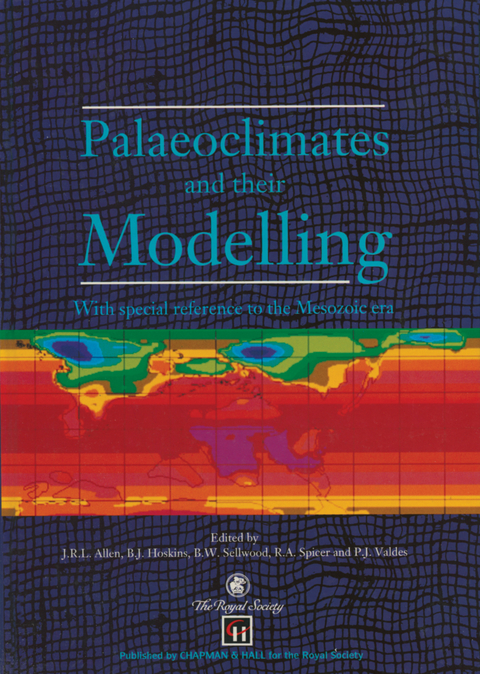
Palaeoclimates and their Modelling
Chapman and Hall (Verlag)
978-0-412-56330-0 (ISBN)
1 The climate system in the recent geological past.- 2 The use of climate response surfaces to reconstruct palaeoclimate from Quaternary pollen and plant macrofossil data.- 3 Sedimentary facies as indicators of Mesozoic palaeoclimate.- 4 Palaeowind: geological criteria for direction and strength.- 5 Fossils and fossil climate: the case for equable continental interiors in the Eocene.- 6 Water vapour, CO2 and insolation over the last glacial-interglacial cycles.- 7 A brief discussion of the history, strengths and limitations of conceptual climate models for pre-Quaternary time.- 8 Modelling of palaeoclimates: examples from the recent past.- 9 Cretaceous phytogeography and climate signals.- 10 Jurassic climates as inferred from the sedimentary and fossil record.- 11 Early Mesozoic phytogeography and climate.- 12 Model simulations of Cretaceous climates: the role of geography and carbon dioxide.- 13 Atmospheric general circulation models of the Jurassic.- 14 Simulation of Late Permian climate and biomes with an atmosphere-ocean model: comparisons with observations.- 15 The role of palaeoclimate studies: modelling.- 16 The role of palaeoclimate studies: geological indicators.
The book shows what can begin to be achieved when information, techniques and insights from a wide range of fields are considered together. - Pascal-Geode
| Erscheint lt. Verlag | 30.4.1994 |
|---|---|
| Zusatzinfo | IX, 140 p. |
| Verlagsort | London |
| Sprache | englisch |
| Maße | 210 x 297 mm |
| Themenwelt | Naturwissenschaften ► Geowissenschaften ► Geologie |
| Naturwissenschaften ► Geowissenschaften ► Meteorologie / Klimatologie | |
| ISBN-10 | 0-412-56330-4 / 0412563304 |
| ISBN-13 | 978-0-412-56330-0 / 9780412563300 |
| Zustand | Neuware |
| Informationen gemäß Produktsicherheitsverordnung (GPSR) | |
| Haben Sie eine Frage zum Produkt? |
aus dem Bereich


